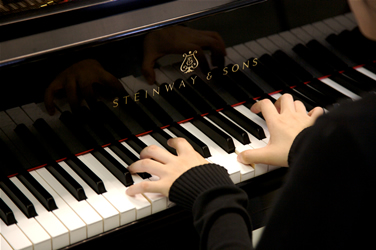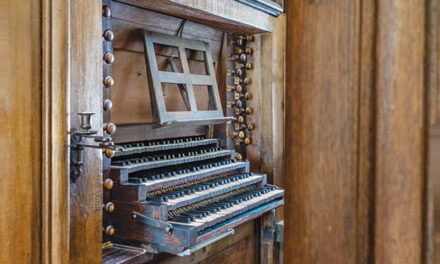The Vivaldi Project, a first-rate period instrument ensemble dedicated to presenting 17th and 18th-century string repertoire, opened its tour of Piedmont NC in Brendle Recital Hall on the lovely campus of Wake Forest University. The ensemble on this occasion consisted of three violinists each in the first and second violins, two violists, two cellists, a double bass, and harpsichord. The conductor was John Hsu who also wrote the extensive, fine program notes for a program consisting entirely of the Six Sinfonias for String Orchestra, W. 182 (1773) of Carl Philipp Emanuel Bach (1714-88). The composer was the second of three sons of John Sebastian Bach (1685-1750) and his first wife, Maria Barbara Bach (1684-1720).
Director Elisabeth Fields, the concertmistress, and assistant director and first cellist Stephanie Vial spoke from the stage giving brief, germane comments about the ensemble and the compositions. They explained why The Vivaldi Project was devoting an entire program to C. P. E. Bach’s Sinfonias. Baron Gottfried van Swieten, the Austrian ambassador to the Prussian Court, commissioned these works and told the composer he need make no allowances for the skills of the orchestra. Bach took as his inspiration the string technical skills of the soloist parts of Vivaldi’s works and applied them to every player! Hsu’s notes describe Bach’s most important contribution as being his innovative and revolutionary approach to dynamics and expression “through such surprises as irregular phrase structure, quick changes of mood, rhythm, harmony, and melodic figures.” Each of the six sinfonias is scored with remarkable individuality with such surprises as “juxtaposed loud and soft passages seeming at random” and richly varied melodies. Most scholars consider C. P. E. Bach an important figure in the transition from the Baroque to Classical Music Eras. Hsu writes “some musicians are inclined to consider him the first romantic composer.” While this is an extreme view, it reflects the composer’s Empfindsamer Stil (sensitive style) intended to express “true and natural” feeling evinced in the abrupt contrasts of mood.
The sinfonias were performed out of their published order for maximum contrast and variety. Sinfonia III in C, Sinfonia V in B minor, and Sinfonia IV in A opened the concert while Sinfonia VI in G, Sinfonia I in G, and Sinfonia II in B-flat ended the evening superbly. Each work consists of three movements played without pause; a fast movement, a slow movement, and a fast-paced finale, often based upon a dance, with a brilliant finish. Sinfonia No. III’s whimsical opening is followed by the composer’s name BACH and his initials, rendered musically in German pitch notation, in the slow movement. The dramatic opening of Sinfonia III would be worthy as an overture to an opera. Sinfonia IV is a master class in the imaginative application of all sorts of broken chords. Broken chords are also featured in the opening of Sinfonia VI which ends with suppressed cadence. Unexpected keys, abrupt dynamics, and surprising harmonics are features of Sinfonia I. Most remarkable is the lyrical second movement with its asymmetrical theme, given three different treatments. A haunting p pizzicato accompaniment by the cellos and bass was gorgeous and memorable. The witty and harmonically creative Sinfonia II with its extraordinarily virtuosic violin writing in the Presto finale made an ideal finish for a remarkably satisfying concert. Each fast or even faster paced finale brings each sinfonia to a brilliant, rousing conclusion.
The string playing of The Vivaldi Project musicians was simply breathtaking! Most impressive was their precise articulation at the fastest speeds, along with such technical challenges as “rapid scales, arpeggios, and multiple stops.” Each string section played exactly together as one player no matter how abrupt the change in dynamics or tempo. This group cannot be booked to return to our concert venues too soon. This Wake Forest University concert was followed by one in Durham’s First Presbyterian Church.












